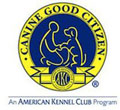What is rattlesnake avoidance training?
Around this time of year, the rattlesnake danger moves to the forefront of every Reno/Sparks dog owner’s mind, and people start asking us about my thoughts on rattlesnake avoidance training. Our take on it is that it’s a good idea for some dogs, but you have to understand how it works, and what it does and doesn’t do, to decide if it’s right for your dog.
Rattlesnake avoidance training is done with a shock collar. Basically, a professional teaches your dog to associate the presence of a snake with a painful shock. When done properly, the actual level of shock is set for each individual dog by the experienced trainer, since dogs will have different sensitivity levels. In order for this to be a long-lasting lesson, the shock must be at a high level – dogs do cry out, so you probably don’t want to watch. It doesn’t last long, though, and the professionals who do it in Northern Nevada seem to have extremely good timing, and get reliable results. In general, the greatest danger in using a severe punishment to teach a dog is that they might associate the punishment with something other than what you’ve intended (such as the humans who are standing around when the shock happens). Reassuringly, I’ve never heard of a dog in Reno associating the shock in rattlesnake aversion training with anything other than the snake. We’ve never had to treat any behavioral concerns as a result of rattlesnake training specifically. (This is unlike other forms of e-collar training, or aversive training, the fallout of which we address frequently, unfortunately, especially in private training).
Occasionally we do hear of mild behavioral side effects, such as a fear of garden hoses, or the stethoscope in the vet’s office, or other snake-looking objects.
Does my dog need rattlesnake training?
So who should have this done? Here are some factors to consider: if your dog 1) lives, goes hiking, or camping, a lot in rattlesnake habitat and 2) is one of those super predatory dogs who sees something move in the bushes and immediately pounces on it (terriers, hunting dogs, mouse and lizard hunters everywhere, we’re looking at you!), you should consider rattlesnake avoidance training.
In our experience, dogs who aren’t predatory or terribly stimulated by movement will often leave snakes alone or take a wide path around them voluntarily. I (Joanna) was once walking my three dogs when we encountered a bull snake in the road. All three looked a little uneasy with it and gave it a wide berth on their own, and I’ve since heard stories of other dogs having the same instinctual reaction. But, none of those dogs are the “predatory type.”
What would the trainer do?
Personally, I (Joanna) go hiking with my dogs (they’re non-predatory types who live with small animals at home), off leash, and they haven’t done rattlesnake training. We have encountered snakes, and they generally walk right past them without engaging with them at all. The snakes either freeze, or move away from us. My thought is, if one of my dogs were ever to be bit by snake, it would probably be because she stepped on it while running, and didn’t even know it was there. And if she doesn’t know it’s there, how could she avoid it, even if he had learned to?
If your dog is bit by a rattlesnake, don’t panic. Not all bites actually inject venom (most don’t), and even if they were injected, the venom of our local species of rattlesnake (the Great Basin, or Western, Rattlesnake) isn’t necessarily going to be fatal to your dog. It’s most likely just going to be a very bad day. Calmly get them to the vet as quickly as possible and tell them what happened.
Ultimately, every dog is different, every lifestyle is different, and only you are in a position to make decisions about your dog’s safety and happiness. Reach out to us with any questions! While we do not offer rattlesnake avoidance training, we’re happy to answer any other questions you may have!








